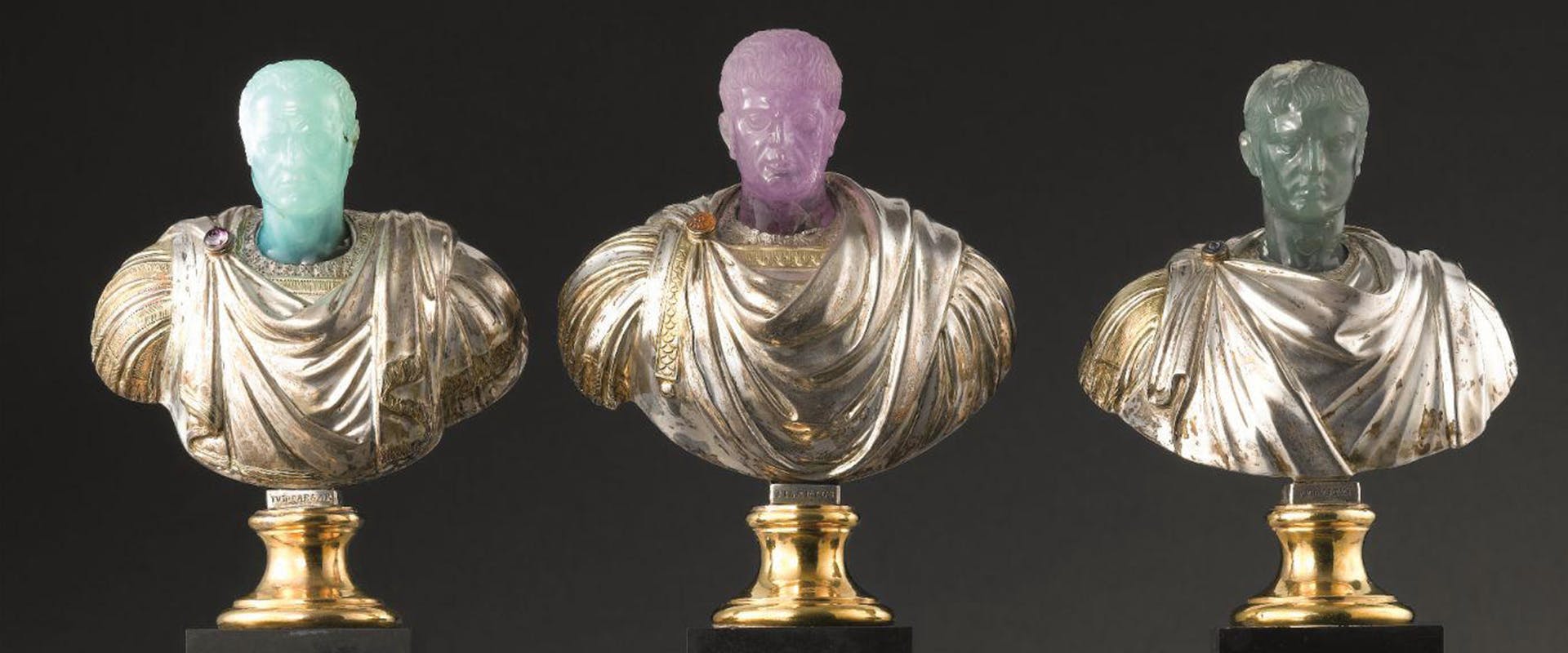Splendida Minima - Small Precious Sculptures in the Medici Collections: from the Tribuna of Francesco I de' Medici to the Grand Ducal Treasure
The exhibition is dedicated to a particular class of artefacts of high artistic value, albeit small in size: small sculptures in the shape of roundels made of precious stones, dating back to the Hellenistic-Roman period. For centuries, such objects were the core of the Medici's collecting interest and today constitute a large part of the Tesori dei Granduchi museum's heritage in the Uffizi Galleries.
The exhibition starts by illustrating with a few examples the characteristics of these small rounded sculptural formats from the classical period, made of precious stones, and highlighting their extraordinary closeness, in iconographic and formal terms, to the marvellous sculptural style of the period.
The total amount of precious antique sculptures known to date is approximately 480 pieces, which is undoubtedly inaccurate by default and therefore destined to increase with the advancement of studies. As shown by iconographic comparisons from a 6th century A.D. precious ivory diptych or an early 3rd century A.D. marble relief, the first section of the exhibition describes the functions of these precious sculptures, which were used as complementary attributes associated with portraits linked to the imperial cult.
Francesco I de' Medici was very fond of this kind of semi-precious stone small sculptures. He had an extensive collection of them and was committed to increasing it by commissioning the purchase of marbles and stones in Rome suitable for creating busts. Antique heads in semi-precious stones were thus assembled on oriental alabaster busts, sculpted in the court workshops and embellished with draperies and gilded silver hairdos. This collection was destined by Francesco I to furnish the Tribuna (as described in the 1589 inventory), a legitimate treasure in the heart of the Uffizi.
During the 17th and 18th centuries, other illustrious members of the Medici dynasty collected and cultivated a taste for collecting these particular objects. One of these was Cardinal Leopoldo, a refined and erudite collector who acquired pieces of exceptional quality. Cosimo III was responsible for including his uncle Leopoldo's works in the increasingly sumptuous furnishings of the Tribuna, as can be deduced from the precise drawings in the atlas of the Gallery edited by Benedetto Vincenzo De Greyss. In the last section of the exhibition, a life-size reconstruction of the late 18th-century layout of one of the Uffizi Galleries' Tribuna shelves has been undertaken using this precious document. The scenographic reproduction of the drawing of the wall with the statue of Apollo is present in the background of almost all the works distributed on the shelf: the few missing items are due to lost pieces or those that could not be loaned to the exhibition. Hence, this is the first attempt to reconstruct this fundamental aspect of the Tribuna's decoration, highlighting how, even in the 18th century, the arrangement of the statues on the shelf was centred on subtle relationships between the size and colour of the objects.
